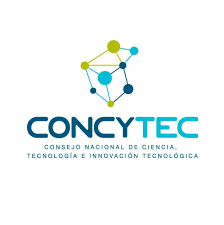A Card Game Proposal for Approaching Regular Languages
DOI 10.54798/CJOK6586
Resumen
Formal languages are a relevant subject in computer science programs, they are a fundamental cornerstone for the
development of programming languages, pattern recognition in texts, and they are deeply related to the theory of computation,
including problems and their complexity. This work proposes a turn-based competitive card game that models the basics of
regular languages, also known as type-3 languages. Through this game’s mechanics, we aim to model relevant formal concepts,
such as languages, symbols, alphabets, words, operators and word matching with regular expressions. We present the rules of the game and the design reasoning behind them, explaining how this rules relate to the abilities students require to work with
regular languages. We report some early feed back received from computer science students.
Citas
A. Manzano-Le´on, P. Camacho-Lazarraga, M. A. Guerrero, L. Guerrero-
Puerta, J. M. Aguilar-Parra, R. Trigueros, and A. Alias, “Between level
up and game over: A systematic literature review of gamification in
education,” Sustainability, vol. 13, no. 4, 2021. [Online]. Available:
https://www.mdpi.com/2071-1050/13/4/2247
C. Kazimoglu, “Enhancing confidence in using computational thinking
skills via playing a serious game: A case study to increase motivation
in learning computer programming,” IEEE Access, vol. 8, pp. 221 831–
851, 2020.
J. Sinclair, M. Butler, M. Morgan, and S. Kalvala, “Measures of
student engagement in computer science,” in Proceedings of the 2015
ACM Conference on Innovation and Technology in Computer Science
Education, ser. ITiCSE ’15. New York, NY, USA: Association
for Computing Machinery, 2015, p. 242–247. [Online]. Available:
https://doi.org/10.1145/2729094.2742586
A. I. Wang and R. Tahir, “The effect of using
kahoot! for learning – a literature review,” Computers
Education, vol. 149, p. 103818, 2020. [Online]. Available:
https://www.sciencedirect.com/science/article/pii/S0360131520300208
N. Chomsky, “Three models for the description of language,” IRE
Transactions on Information Theory, vol. 2, no. 3, pp. 113–124, 1956.
——, “On certain formal properties of grammars,” Information and
Control, vol. 2, no. 2, pp. 137–167, 1959.
A. V. Aho and J. D. Ullman, “The theory of languages,” Mathematical
systems theory, vol. 2, pp. 97–125, 1968.
M. Gabbrielli and S. Martini, How to Describe a Programming Language.
London: Springer London, 2010, pp. 27–55.
——, Abstract Machines. London: Springer London, 2010, pp. 1–25.
Publicado
Licencia
Derechos de autor 2024 Revista Cientifica Emprendimiento Científico Tecnologico

Esta obra está bajo una licencia internacional Creative Commons Atribución-NoComercial 4.0.














